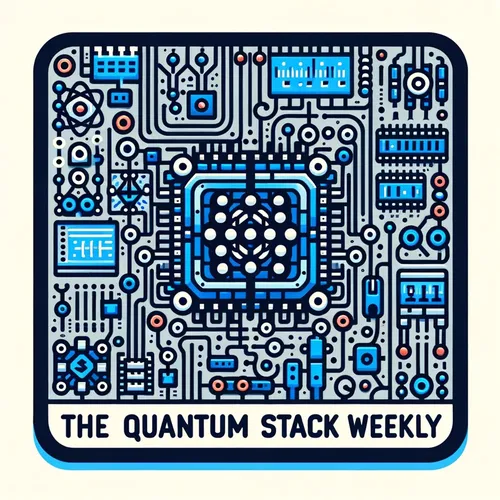Denmark's Mighty Magne: 50 Logical Qubits Unleashed in Commercial Quantum Leap
- Author
- Quiet. Please
- Published
- Sun 20 Jul 2025
- Episode Link
- https://www.spreaker.com/episode/denmark-s-mighty-magne-50-logical-qubits-unleashed-in-commercial-quantum-leap--67046047
This is your The Quantum Stack Weekly podcast.
Today on The Quantum Stack Weekly, I'm skipping the pleasantries and diving straight into the revelation that, just yesterday, Denmark became home to what may be the world’s most powerful commercially available quantum computer. Yes, you heard that right. The newly formed QuNorth initiative—backed by an €80 million investment from the Novo Nordisk Foundation and EIFO—announced the arrival of Magne, a quantum computer named for a Norse demigod, and inspired to be equally mighty.
But what truly sets Magne apart from every other system on the block is that it’s not just another noisy physical-qubit machine. Magne is a full-stack Level 2 quantum computer, running on 50 logical qubits stabilized through sophisticated error correction, mapped onto over 1,200 physical qubits. To the uninitiated, the leap from physical to logical qubits isn’t just a technical footnote—it’s a seismic shift, akin to the difference between a steam locomotive and a maglev train. Logical qubits aren’t fragile wisps of possibility; they’re hard-won, error-corrected building blocks that can finally deliver the reliability the real world demands.
The technical drama unfolds like this: physical qubits can flip or lose coherence with the tiniest disturbance—the subatomic scale equivalent of trying to concentrate while a mosquito wings by your ear. Error correction weaves together many physical qubits to create a logical one, reinforcing fragile states the way a skyscraper’s steel skeleton resists gales. And with Magne, for the first time, these sturdy logical qubits are assembled in commercial hardware, ushering in an era where quantum advantage is not a headline, but a daily tool.
Microsoft brings advanced error-correction software and a custom Azure quantum stack; Atom Computing contributes a neutral atom hardware platform with high-fidelity control. Together, they serve up quantum resources for everything from drug discovery to climate modeling. Imagine a pharmaceutical breakthrough modeled in hours, not years—or a global supply chain re-optimized every night before sunrise. Even policymakers are watching, acutely aware of the geopolitical stakes. Jason Zander of Microsoft called the Magne launch a "reliable quantum computing reality," and Dr. Ben Bloom of Atom Computing teased deep algorithmic research ahead.
I walk among racks of liquid-cooled servers, hearing the hum of supercomputers and the silent operations of quantum chips chilled to near absolute zero. I sense, almost physically, a new possibility: this hum isn’t just data pulsing—it’s the quantum fabric of our future being rewoven, logical layer by logical layer.
In the relentless, entangled race among the US, China, and Europe, this Nordic leap reminds us that the quantum world isn’t governed by borders, but by the elegance of error correction and the poetry of entanglement.
Thanks for listening. If you’ve got questions or want a topic discussed, just hit me up at [email protected]. Don’t forget to subscribe to The Quantum Stack Weekly. This has been a Quiet Please Production—find out more at quietplease.ai.
For more http://www.quietplease.ai
Get the best deals https://amzn.to/3ODvOta
